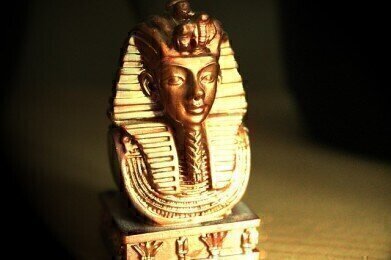News
Did King Tutankhamun Own a Meteorite Dagger?
Jun 18 2016
As one of the most prominent ancient historical figures of all time, King Tutankhamun barely needs an introduction. He reigned as an Egyptian pharaoh during the 18th dynasty, governing the empire between 1332 and 1323 BCE. He wasn’t short on riches, and now a team of researchers is claiming that his most precious possession has its roots in outer space.
Intriguingly titled “The meteoritic origin of Tutankhamun’s iron dagger blade,” the recently published academic paper shuns a jargon-heavy heading in favour of irresistible intrigue. So what’s prompted the scientists to put forward the idea that King Tut wielded a celestial space dagger?
X-ray technology reveals intergalactic origins
Until his excavation in 1922, the ‘boy king’ lay buried in his tomb clutching an ornamental blade. Almost 100 years later and a team of Italian and Egyptian researchers were able to pinpoint the dagger’s composition using next generation X-ray fluorescence spectroscopy technology. The process energetically excites the target’s compounds, with radiation then re-emitted in differing wavelengths. Researchers then use these wavelengths to determine the presence of individual elements, without physically damaging the target.
They found that the majority of the weapon was made up of iron, along with traces of cobalt and nickel. The trio sounds humdrum, but space scientists assert that this unique elemental composition is none other than iron meteorite, one of the oldest objects known to the solar system.
Proof that Ancient Egyptians valued ‘out of this world’ objects
According to historians, its significance stands as evidence that the Ancient Egyptians knew that meteoric iron fell from the sky, and as such instilled it with enormous value. This theory could also explain the appearance of a composite hieroglyphic term that materialised at the same time, translating to “iron of the sky.”
“The introduction of the new composite term suggests that the ancient Egyptians… were aware that these rare chunks of iron fell from the sky already in the 13th century BCE, anticipating Western culture by more than two millennia,” mused the researchers.
The team then took their research one step further, identifying the exact meteor that the dagger was forged from. Sifting back through historical records they studied impact sites within a 1,243-mile radius. They then used the dagger’s precise composition to narrow possibilities down to the Kharga fragment that hit the Mersa Matruh plateau near Alexandria.
As well as offering glimpses at the past, x-rays are also a keynote part of modern medicine. Nanomedical Cancer Innovations spotlights an exciting new development, and how nanoparticles could prove a useful weapon in the fight against cancer.
Digital Edition
Lab Asia Dec 2025
December 2025
Chromatography Articles- Cutting-edge sample preparation tools help laboratories to stay ahead of the curveMass Spectrometry & Spectroscopy Articles- Unlocking the complexity of metabolomics: Pushi...
View all digital editions
Events
Jan 21 2026 Tokyo, Japan
Jan 28 2026 Tokyo, Japan
Jan 29 2026 New Delhi, India
Feb 07 2026 Boston, MA, USA
Asia Pharma Expo/Asia Lab Expo
Feb 12 2026 Dhaka, Bangladesh



















